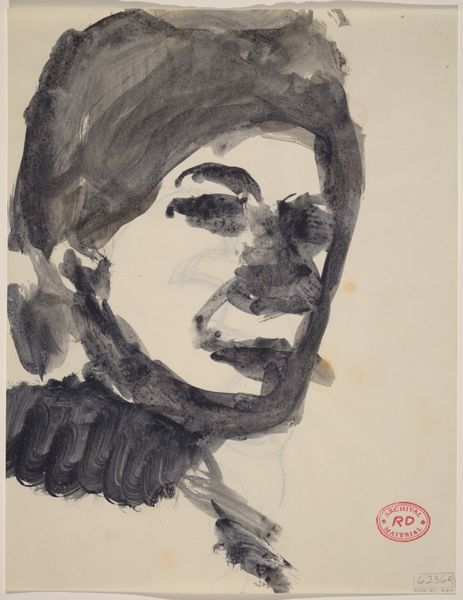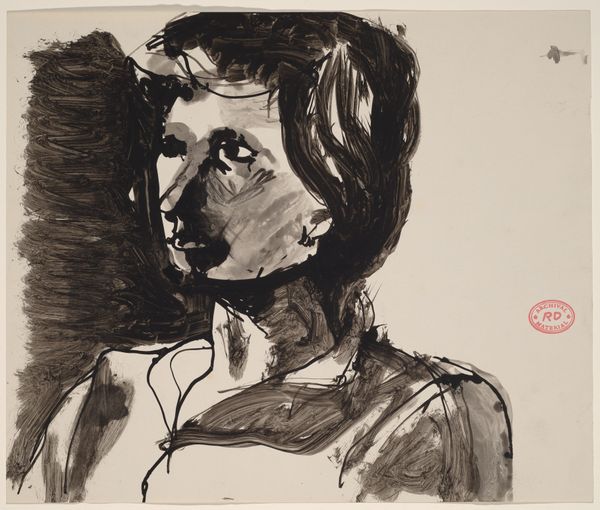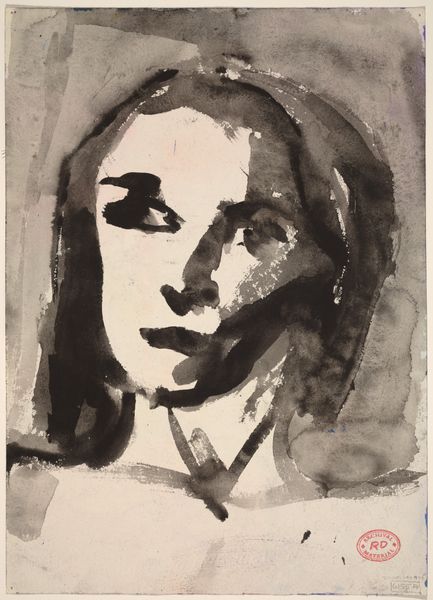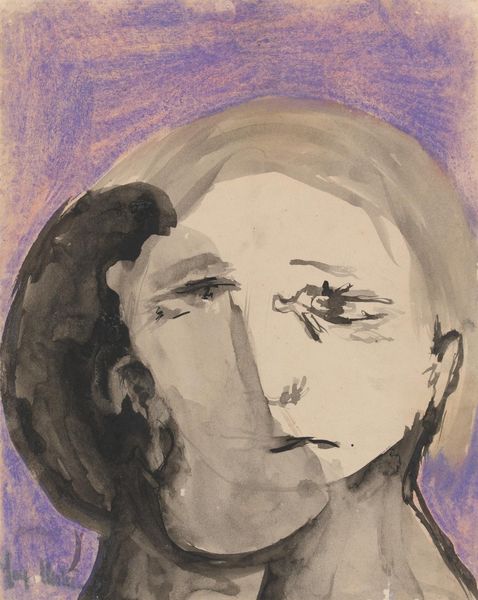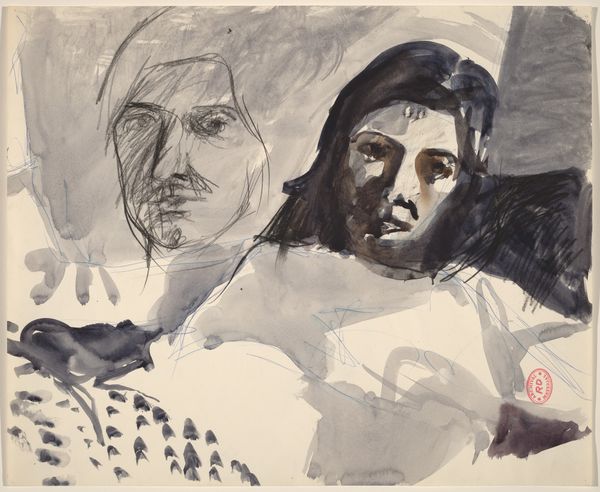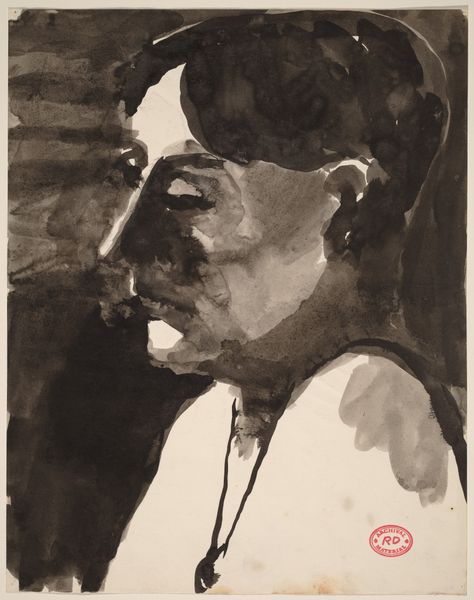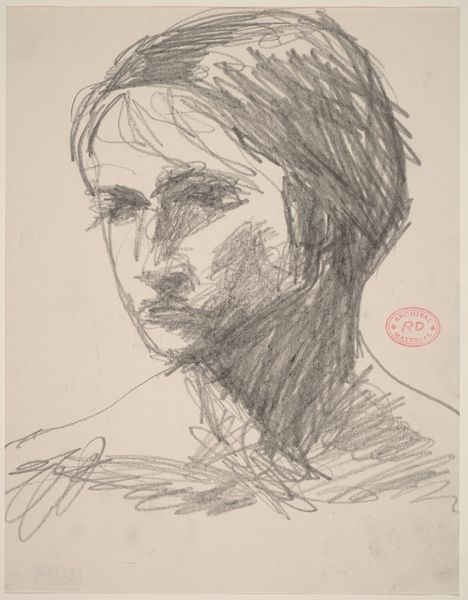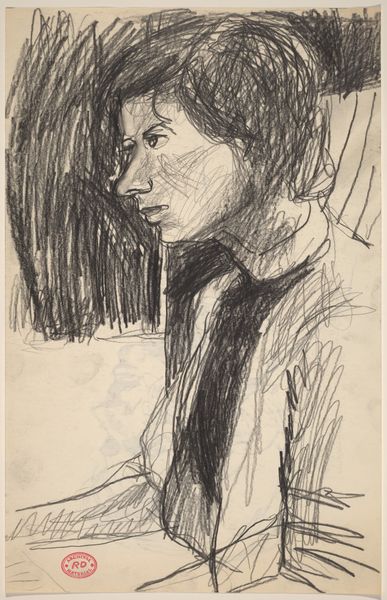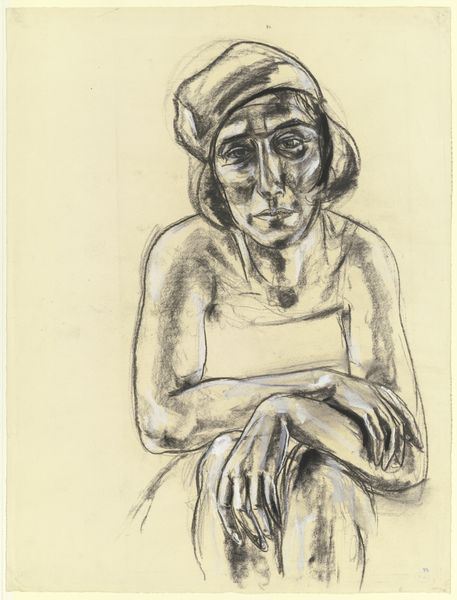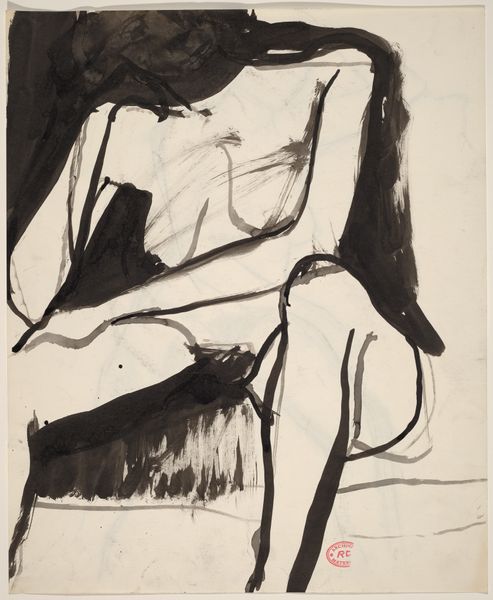![Untitled [portrait] by Richard Diebenkorn](/_next/image?url=https%3A%2F%2Fd2w8kbdekdi1gv.cloudfront.net%2FeyJidWNrZXQiOiAiYXJ0ZXJhLWltYWdlcy1idWNrZXQiLCAia2V5IjogImFydHdvcmtzLzUyYWEzMDBjLTdlN2EtNGM1OC1hMmM2LWZiMzZlYTdiNjhmNC81MmFhMzAwYy03ZTdhLTRjNTgtYTJjNi1mYjM2ZWE3YjY4ZjRfZnVsbC5qcGciLCAiZWRpdHMiOiB7InJlc2l6ZSI6IHsid2lkdGgiOiAxOTIwLCAiaGVpZ2h0IjogMTkyMCwgImZpdCI6ICJpbnNpZGUifX19&w=3840&q=75)
drawing
#
drawing
#
light pencil work
#
possibly oil pastel
#
bay-area-figurative-movement
#
fluid art
#
acrylic on canvas
#
ink drawing experimentation
#
underpainting
#
arch
#
portrait drawing
#
watercolour illustration
#
portrait art
#
watercolor
Dimensions: overall: 35.2 x 27.6 cm (13 7/8 x 10 7/8 in.)
Copyright: National Gallery of Art: CC0 1.0
Curator: This is an untitled portrait by Richard Diebenkorn, likely created sometime between 1955 and 1967, worked in what appears to be ink or watercolor. Editor: The immediate impression is somber. It's monochromatic and loosely rendered. The stark contrasts make the subject appear rather melancholy. Curator: The downward gaze reinforces that somber mood. Consider how portraiture historically served to elevate the subject, projecting power and status. Here, Diebenkorn seems more interested in capturing an introspective moment. Editor: Definitely. It almost feels incomplete, an exercise. The brushstrokes are confident but economical. The negative space is as crucial as the marked areas. The balance hinges on this sparseness, what’s *not* shown. Curator: Yes, the reduced palette really focuses our attention on the emotional core, which speaks to a modern sensibility, where psychological states hold so much power over cultural narratives. It diverges significantly from the symbolic language present in historical portraits, doesn't it? Editor: Well, you could argue the lack of adornment becomes its own symbolic gesture—a rejection of outward show, or a commentary on modern alienation, maybe? The stylistic fluidity also contrasts with older, academic formal rigor. Curator: A fascinating point. Even the choice of medium adds to this reading, right? The inherent spontaneity of ink, its capacity for unpredictable bleeds and textures, echoes the unpredictable nature of human emotion itself. Editor: I agree, there's an undeniable dynamism in the execution that hints at psychological interiority. It gives an insight to how a psychological state can affect portraiture, an intimate moment with ink on paper. Curator: Exactly, and what makes Diebenkorn's study even more engaging, for me, is how he invites us, as viewers, into that intimate emotional space. Editor: A poignant example of extracting potent mood using minimal compositional components.
Comments
No comments
Be the first to comment and join the conversation on the ultimate creative platform.
